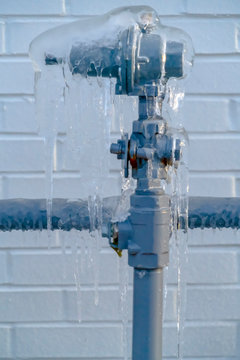Avoid Frozen Pipes in Winter: Expert Strategies
Click HereDo you find yourself interested in details around Helpful Tips to Prevent Frozen Pipes this Winter?

Cold weather can wreak havoc on your plumbing, specifically by freezing pipelines. Right here's just how to avoid it from happening and what to do if it does.
Intro
As temperatures decrease, the danger of frozen pipes rises, potentially resulting in pricey repair services and water damage. Understanding just how to stop icy pipelines is vital for home owners in cold climates.
Comprehending Frozen Pipes
What creates pipes to ice up?
Pipelines freeze when subjected to temperatures below 32 ° F (0 ° C) for prolonged durations. As water inside the pipes freezes, it increases, putting pressure on the pipeline walls and potentially triggering them to break.
Risks and problems
Icy pipes can cause water supply interruptions, building damages, and costly repair services. Ruptured pipes can flooding homes and create considerable architectural damage.
Signs of Frozen Pipeline
Identifying frozen pipes early can stop them from bursting.
Just how to recognize frozen pipelines
Seek lowered water flow from taps, uncommon odors or noises from pipelines, and noticeable frost on exposed pipes.
Prevention Tips
Shielding prone pipelines
Cover pipes in insulation sleeves or make use of heat tape to shield them from freezing temperatures. Focus on pipelines in unheated or external areas of the home.
Heating strategies
Keep indoor spaces properly heated, specifically locations with pipes. Open cabinet doors to enable cozy air to circulate around pipelines under sinks.
Safeguarding Exterior Plumbing
Garden hose pipes and outside taps
Disconnect and drain pipes garden hose pipes prior to winter months. Install frost-proof spigots or cover outside taps with insulated caps.
What to Do If Your Pipes Freeze
Immediate activities to take
If you suspect icy pipelines, keep faucets available to eliminate pressure as the ice melts. Use a hairdryer or towels taken in warm water to thaw pipes slowly.
Long-Term Solutions
Structural modifications
Think about rerouting pipes away from exterior wall surfaces or unheated areas. Add additional insulation to attic rooms, basements, and crawl spaces.
Upgrading insulation
Purchase high-grade insulation for pipes, attic rooms, and wall surfaces. Appropriate insulation assists keep consistent temperature levels and minimizes the threat of icy pipelines.
Verdict
Protecting against icy pipelines requires positive actions and quick actions. By recognizing the causes, indications, and safety nets, homeowners can safeguard their plumbing throughout winter.
5 Ways to Prevent Frozen Pipes
Drain Outdoor Faucets and Disconnect Hoses
First, close the shut-off valve that controls the flow of water in the pipe to your outdoor faucet. Then, head outside to disconnect and drain your hose and open the outdoor faucet to allow the water to completely drain out of the line. Turn off the faucet when done. Finally, head back to the shut-off valve and drain the remaining water inside the pipe into a bucket or container. Additionally, if you have a home irrigation system, you should consider hiring an expert to clear the system of water each year.
Insulate Pipes
One of the best and most cost-effective methods for preventing frozen water pipes is to wrap your pipes with insulation. This is especially important for areas in your home that aren’t exposed to heat, such as an attic. We suggest using foam sleeves, which can typically be found at your local hardware store.
Keep Heat Running at 65
Your pipes are located inside your walls, and the temperature there is much colder than the rest of the house. To prevent your pipes from freezing, The Insurance Information Institute suggests that you keep your home heated to at least 65 degrees, even when traveling. You may want to invest in smart devices that can keep an eye on the temperature in your home while you’re away.
Leave Water Dripping
Moving water — even a small trickle — can prevent ice from forming inside your pipes. When freezing temps are imminent, start a drip of water from all faucets that serve exposed pipes. Leaving a few faucets running will also help relieve pressure inside the pipes and help prevent a rupture if the water inside freezes.
Open Cupboard Doors
Warm your kitchen and bathroom pipes by opening cupboards and vanities. You should also leave your interior doors ajar to help warm air circulate evenly throughout your home.
:strip_icc()/snow-outdoor-faucet-pipes-4af65d1e5e904fb1aa7bf74071fe5d89.jpg)
I was made aware of that report on How to prepare your home plumbing for winter weather through a good friend on a different domain. Sharing is nice. Helping people is fun. Many thanks for your time. Kindly visit our site back soon.
Schedule Estimate